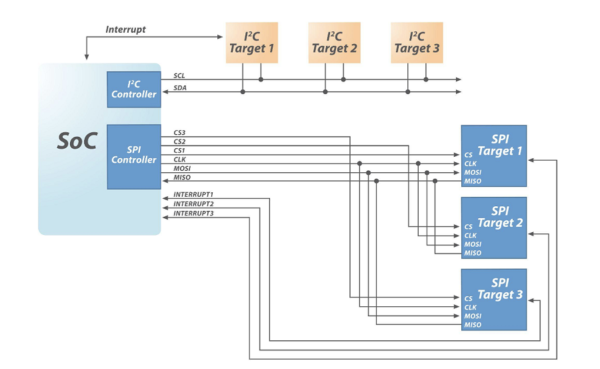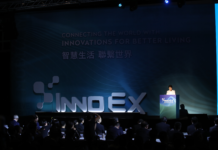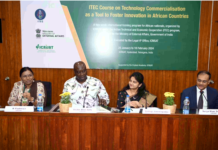
The article describes the key trends in IIoT device design – particularly the need for higher data bandwidth and ever lower power consumption, and the drive toward miniaturization – and whether current embedded command and control interfaces meet these challenges, or whether a transition to newer interfaces is required.
Embedded command and control interfaces are at the heart of all Industrial IoT (IIoT) devices, providing fundamental internal connectivity between peripheral devices, such as sensors, actuators and UI components, and their associated host processors.
Many of today’s IIoT devices use interfaces such as I2C (Inter-Integrated Circuit), SPI (Serial Peripheral Interface) and UART (Universal Asynchronous Receiver-Transmitter), which, over the past 30 years, have become the “go-to” interfaces in the embedded hardware engineer’s toolkit.

Embedded command and control interface challenges
Established interfaces such as I2C, SPI and UART have served the embedded electronics industry well since their introduction in the late 1970s and early ’80s. But since that time, several industry advancements, prevalent not only in IIoT but also across the wider electronics industry, have placed increasing pressure on these legacy interfaces:
- Increasing data bandwidths – The total data bandwidth demand on command and control interfaces is being driven up by the combination of two primary factors. First, the number of sensors, actuators and other peripheral components being built into IIoT devices continues to increase. Devices today not only contain essential components to serve the device’s core function, but they also increasingly contain ancillary components to monitor the performance and environment of the device itself to ensure it is functioning properly and perform remote management of the device. Second, the sensors and other peripheral components being built into IIoT devices are becoming increasingly advanced, generating significantly greater volumes of data due to increased sensitivity, accuracy and sampling rates.
- Need for miniaturization – Compact device designs are essential for many IIoT devices, particularly those that must be unobtrusively accommodated within a pre-existing industrial process. With IIoT devices containing an ever increasing number of peripheral components, it is essential that the number of wires and pins required by the command and control interfaces that connect these components be kept to an absolute minimum.
- Ever lower power consumption – A key requirement of many IIoT devices is ultra-low power consumption to enable untethered operation from either a battery or other type of constrained power source. It is becoming increasingly essential that command and control interfaces are not only power efficient themselves, but are also “smart” – that is, that they can enable the subsystems within a device to power up and down in the most efficient way possible to achieve the lowest possible power consumption by the overall system.
Solving these challenges using industry standardized interfaces
To solve these challenges, developers will need to implement new command and control interfaces that provide higher bandwidths, use the minimum number of wires and pins, consume the minimum amount of power and enable the whole system to minimize its power consumption.
The use of industry standard interfaces, as opposed to proprietary or vendor-led interfaces, can solve these challenges and provide many additional benefits. This has been proven in adjacent industries such in mobile phones, where industry standards for embedded camera and display interfaces have solved similar challenges.
The use of standards in these industries has created economies of scale around interfaces, reducing integration costs and enabling developers to amortize engineering costs over larger volumes of components. Standardized interfaces also promote the availability of enhanced support services such as test and software resources from a wide ecosystem of industry contributors. Standardization also improves technologies more quickly, as vendors develop more efficient ways to implement the specifications – which are then integrated into future releases. Standardized interfaces can also ease ongoing product maintenance and updates, thanks to backward and forward compatibility, while also encouraging long-term developer support.
Most importantly, the use of standards removes the burden of designing (or selecting) a proprietary interface, allowing a developer to focus on “higher value” technologies that sit higher up in the protocol stack and provide product differentiation, such as applications that leverage machine learning and artificial intelligence to provide enhanced product functionality.
MIPI I3C: A next-generation industry standard command and control interface
MIPI I3C is the successor to I2C and provides a cost-effective, simple and flexible two-wire interface that can be used to connect sensors, actuators, controls and simple UI components to host processors. It provides performance, power and pin-count improvements over I2C, SPI and UART implementations. MIPI I3C Basic, which bundles the most commonly used I3C features for embedded developers, is also available under a royalty-free licensing environment for all implementers.

To meet the key challenges described above, I3C has been developed to provide the following capabilities:
● Supports typical data rate of 10 Mbps with options for higher-performance, high-data-rate modes that provide speeds in excess of 30 Mbps (for single-lane mode).
● Is implemented using complementary metal oxide semiconductor (CMOS) I/O using a two-wire interface to minimize pin counts and the number of signal paths between components.
● Supports in-band-interrupts (IBIs) to negate the need for additional physical lanes for interrupt signals.
● Consumes low amounts of energy per bit transported.
● Offers power-efficient, high-speed batch data transfers and allows components to send infrequent bursts of data while minimizing energy consumption.
● Includes “sleep mode” and IBIs to enable peripheral components to wake host processors only when necessary to conserve power consumption.
● Provides synchronous and asynchronous time-stamping to improve the accuracy of applications that use signals from various sensors.
● Is backward compatible with I2C and allows mixed use of I2C and I3C components within a device.
● Is supplemented by a standard conformance test suite, ensuring interoperability and compatibility between different vendors’ solutions.
I3C is supported by an active industry working group that continues to enhance the specification, seeking to develop ever extended path lengths, reduce power consumption and realize even lower pin counts for implementers.

Conclusion
Embedded command and control interfaces are essential to IIoT devices. As IIoT devices integrate ever more powerful capabilities, existing command and control interfaces may struggle to keep up with the bandwidth, ultra-low power consumption and miniaturization demands of next-generation IoT devices. Developers will need to solve these challenges by implementing newer command and control interfaces. Adopting industry standards will not only help developers meet these challenges but also provide many other benefits such as interoperability, backward compatibility and cost reduction. MIPI I3C is an example of a next-generation industry-led standard for command and control interfaces that meets the challenges of next-generation IIoT devices.



















